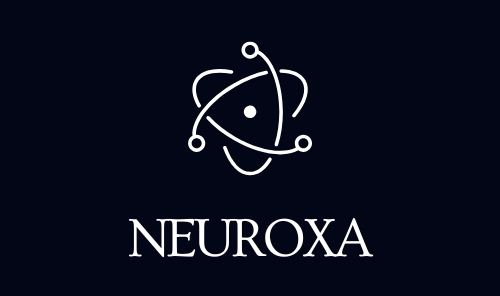The integration of Generative AI (GenAI) has fundamentally changed the classroom dynamic, transforming the traditional teacher-student relationship into a teacher-AI-student triangle. AI is no longer a niche technology; it is an omnipresent assistant for lesson planning, grading, and content creation, and a potential cognitive crutch for students.
To thrive, educators must move beyond simple awareness and achieve AI Fluency. This fluency is the ability to not just use AI tools, but to understand their mechanics, leverage their pedagogical power, and manage their profound ethical and academic implications.
Based on current educational standards (like those from UNESCO and ISTE) and emerging professional development needs, here are the five essential skills every educator must master to lead the modern, AI-enhanced classroom.
1. ⚙️ Prompt Engineering & Tool Mastery (The Utility Skill)
This is the foundational, practical skill of knowing how to instruct an AI effectively and which tool to choose for a specific task. AI is only as good as the prompt it receives. Teachers must be able to craft high-leverage prompts that automate time-consuming administrative and content-creation tasks, freeing up more time for direct student engagement.
| Teacher Task | AI Fluency Application | Prompt Engineering Example |
| Lesson Planning | Using tools like MagicSchool.ai or Khanmigo to generate standards-aligned content. | “Generate a 45-minute lesson plan for a 10th-grade history class on the causes of the Cold War. Include a starter activity and three differentiation strategies for IEP students.” |
| Differentiating Content | Using Diffit or similar tools to adjust text complexity instantly. | “Take this excerpt on cellular respiration and rewrite it at a 7th-grade reading level, bolding all key vocabulary for pre-teaching.” |
| Assessment Creation | Generating quizzes and discussion prompts tailored to a specific text. | “You are a quiz master. Create a 12-question diagnostic quiz (multiple choice and short answer) based only on the provided PDF of Chapter 5.” |
Mastering prompt engineering means viewing the AI as a highly skilled, but literal, thought partner. This dramatically reduces the administrative burden, with some reports showing a 50% reduction in planning time.
2. 🛡️ AI Ethics, Bias, and Data Privacy (The Citizen Skill)
AI Fluency requires a deep commitment to responsible use. Educators are entrusted with student data and must model ethical behavior, especially concerning the inherent biases and “hallucinations” of LLMs. This is often cited as the most critical AI skill for 2025.
Key Ethical Competencies
- Data Privacy: Teachers must understand and adhere to institutional policies regarding student data privacy (e.g., FERPA in the US). They must know which tools are student-safe and which are not, and never input sensitive or personally identifiable student information into public, unvetted GenAI tools.
- Bias Awareness: AI models are trained on biased data sets, potentially perpetuating societal prejudices in historical accounts, image generation, or hiring scenarios. Teachers must develop the critical thinking skill to analyze AI output for bias and teach students to do the same.
- Transparency: Creating clear classroom AI policies that define when and how students can use AI, and how they must cite or disclose its use, fostering academic integrity.
This skill shifts the educator’s role from content provider to ethical gatekeeper, guiding the moral and legal landscape of technology use in the classroom.
3. 🤔 Critical Evaluation and Output Critique (The Discernment Skill)
In an age of abundant, instantaneously generated information, the ability to critique and verify AI output is more valuable than simple information recall. Teachers must lead students in asking the right questions about the AI’s answers.
Strategies for Teaching Critique
- Fact-Checking: Never use AI-generated content (quiz questions, summaries, or facts) without independent verification. Teachers must model this skepticism.
- The AI Debate: Assign students the task of intentionally generating a biased or flawed response from an LLM and then challenging them to debug and correct the output using primary source materials.
- Source Verification: Teach students to demand references from the AI, then critically evaluate the provided links (as AI can “hallucinate” plausible-looking, but fake, sources). Tools like Perplexity, which systematically provide references, can be useful starting points.
- Identifying the “Average Answer”: Explain that AI often produces the most statistically probable (or “average”) answer. The highest form of human critical thinking is finding the unique, non-average insight that the AI cannot generate.
4. 🍎 AI Pedagogy and Assessment Design (The Strategic Skill)
AI is forcing educators to completely rethink why they assign work. Since AI can produce excellent five-paragraph essays, the focus must shift to assessments that require uniquely human skills.
| Assessment Strategy | AI Fluency Application | Why the AI Fails |
| Process-Based Grading | Requiring the submission of iterative drafts, research logs, or prompt histories alongside the final product (e.g., using Google Docs version history). | AI cannot authentically simulate the messy, linear, and time-consuming process of human thought. |
| Contextualization | Designing prompts that require hyper-local knowledge (e.g., analyzing a specific event in the local community) or data only covered in a specific lecture slide. | AI’s knowledge base is vast but generic, lacking the unique, non-digitized context of a specific classroom or local area. |
| Multimodal Reflection | Requiring a short video or audio defense of the written work, or an annotated visual summary (like an infographic). | AI cannot fake authentic human voice, presence, or genuine spontaneous reflection on an argument. |
AI-fluent teachers leverage AI for formative assessment (quick checks for understanding) but reserve summative assessment for tasks that demand creativity, synthesis, and personal application of knowledge.
Conclusion: Reclaiming the Role of the Educator
Achieving AI Fluency is not about becoming a coder or data scientist; it is about becoming a master collaborator, ethical steward, and critical thinking coach. By mastering Prompt Engineering, adhering to ethical standards, critiquing AI outputs, and strategically redesigning assessments, educators reclaim the time lost to administrative tasks and redirect their energy toward the uniquely human elements of teaching: mentoring, inspiring, and fostering deep, critical relationships with their students.
The future-fluent educator is the one who confidently integrates the AI tool, not as a replacement, but as an indispensable amplifier of human judgment and pedagogical strategy.
Source List
- Anthropic Courses: AI Fluency for Educators (Curriculum based on the 4D Framework: Delegate, Describe, Discern, Diligence)
- ISTE (International Society for Technology in Education): Artificial Intelligence in Education – AI Deep Dive for Educators (Focus on ethical and responsible use)
- NEA (National Education Association): Five Principles for the Use of Artificial Intelligence in Education (Focus on data privacy and ethical development)
- Education Week: Rising Use of AI in Schools Comes With Big Downsides for Students (October 2025 data on teacher/student AI adoption and training gaps)
- Grow with Google: Generative AI for Educators with Gemini (Focus on time savings and personalization strategies)
- Harvard University: Teach with Generative AI (Strategies for human-based learning and process-based assessments)
- Disco Learning Platform: What is AI Fluency? A Guide for 2025 Trends and Skills (Defining core AI concepts and practical skills)
- Ditch That Textbook: 50 AI Tools for Teachers, Educators and Classroom (Specific tools like MagicSchool.ai, Diffit, Brisk Teaching)

